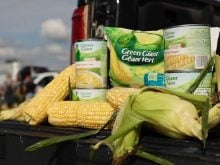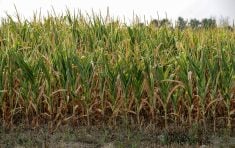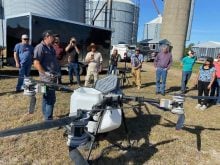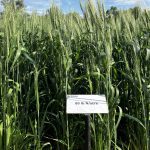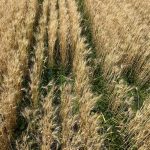Delayed maturity in corn throughout the province from late planting into challenging soil conditions is causing corn maturity to move into more favourable conditions for many diseases.

Albert Tenunta, OMAFRA’s field crops pathologist and Dave Hooker, an associate professor at the University of Guelph’s Ridgetown College, said at the recent Ridgetown-based Crop Diagnostic Days that timing is critical to help control and manage these diseases, especially corn ear diseases.
Why it matters: Correct fungicide timing is one of the most important disease management decisions – aside from choosing the fungicide itself – for farmers trying to manage disease in their corn crop. Corn ear diseases are of much greater concern after a high disease year in 2018.
Variability throughout fields makes it difficult to understand the best time to spray fungicide and this year farmers are seeing more variability as most acreage was planted into less than ideal conditions.
Read Also

Canada seventh-most influential country on agri-food
Report from Dalhousie University and MNP shows Canada ranks seventh among G20 countries on agri-food influence.
“In most cases the comment was ‘if I had one more day, two more days, it would have been just perfect’ and so we ended up with a lot of sidewall compaction, smearing…and below was really wet and the variability is going to show over the next couple of weeks,” says Tenuta.
There are two times that affect fungicide applications, tasseling or silking. Spraying at silking targets corn ear diseases and tasseling targets foliar leaf diseases.
“[There is a] six-day window of silk infection and this is the time that we should be spraying our fungicide from full silk to when the silks just begin to brown,” says Hooker.
Tenuta had many growers tell him they sprayed a fungicide but still got Gibberella in their corn crops in 2018.

“If it’s too early in terms of the infection period or the development side, the silks aren’t out, the fungicide is not there, targeting the necessary plant parts,” says Tenuta.
Spraying at or just before tassel is more of an American Midwest practice to target leaf disease, says Hooker.
Ontario is surrounded by the Great Lakes so it is a hot spot for Gibberella ear rot and growers need to put more focus on managing ear rots versus leaf diseases.
A study by Ridgetown researcher Art Schaafsma showed that there is a 60 per cent reduction in DON levels if corn is sprayed for Gibberella ear rot around silking, within a six-day window, before the silks begin to brown.
Spraying when silks are brown has been shown to result in the same level of DON infection as an untreated check, says Hooker.
Foliar disease management requires scouting to see if the fungicide is required.
“It’s important to assess your field and your risk – is this foliar leaf disease going to cost an issue in yield? If not, then Gibberella should be your focus,” says Tenuta.
The 2019 corn fungicide season is going to bring unusual challenges due to unusual planting conditions, which will mean even more need for corn crop scouting.







